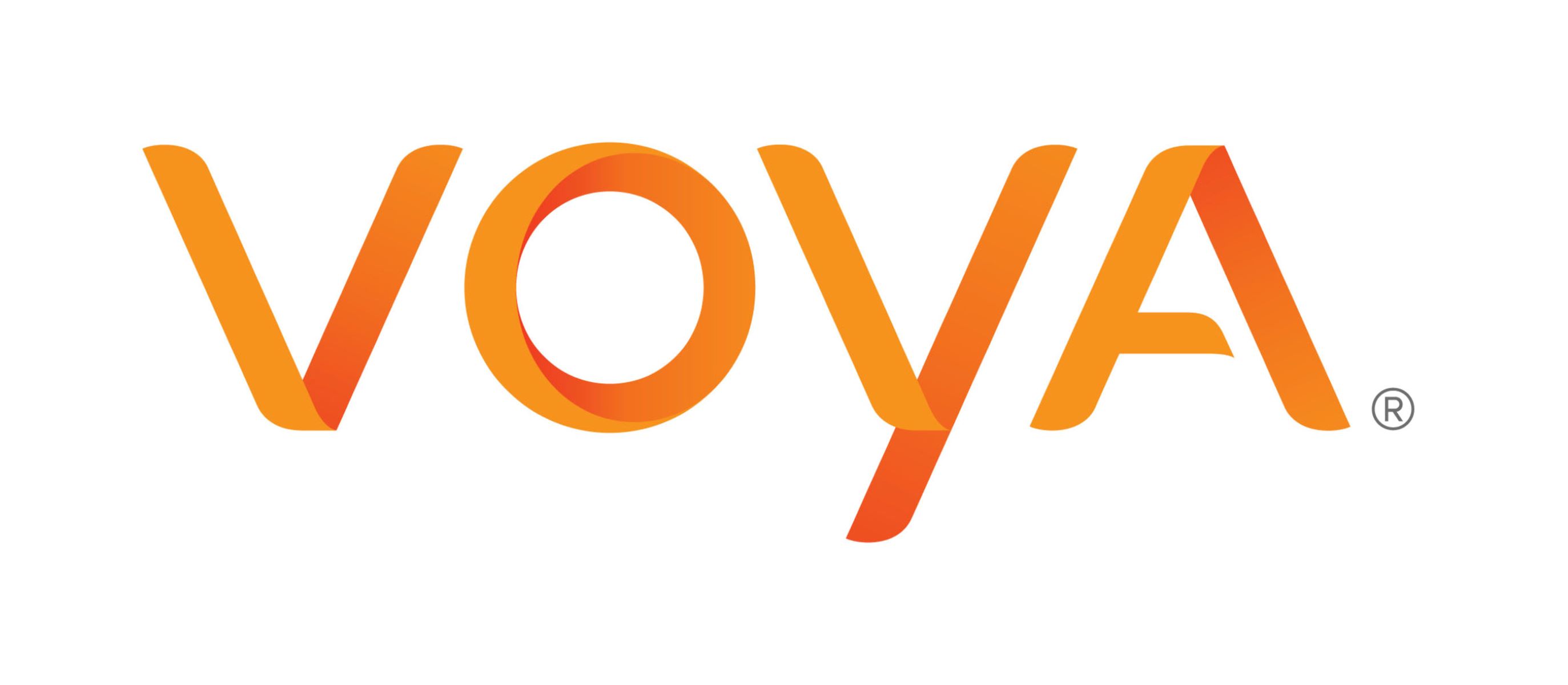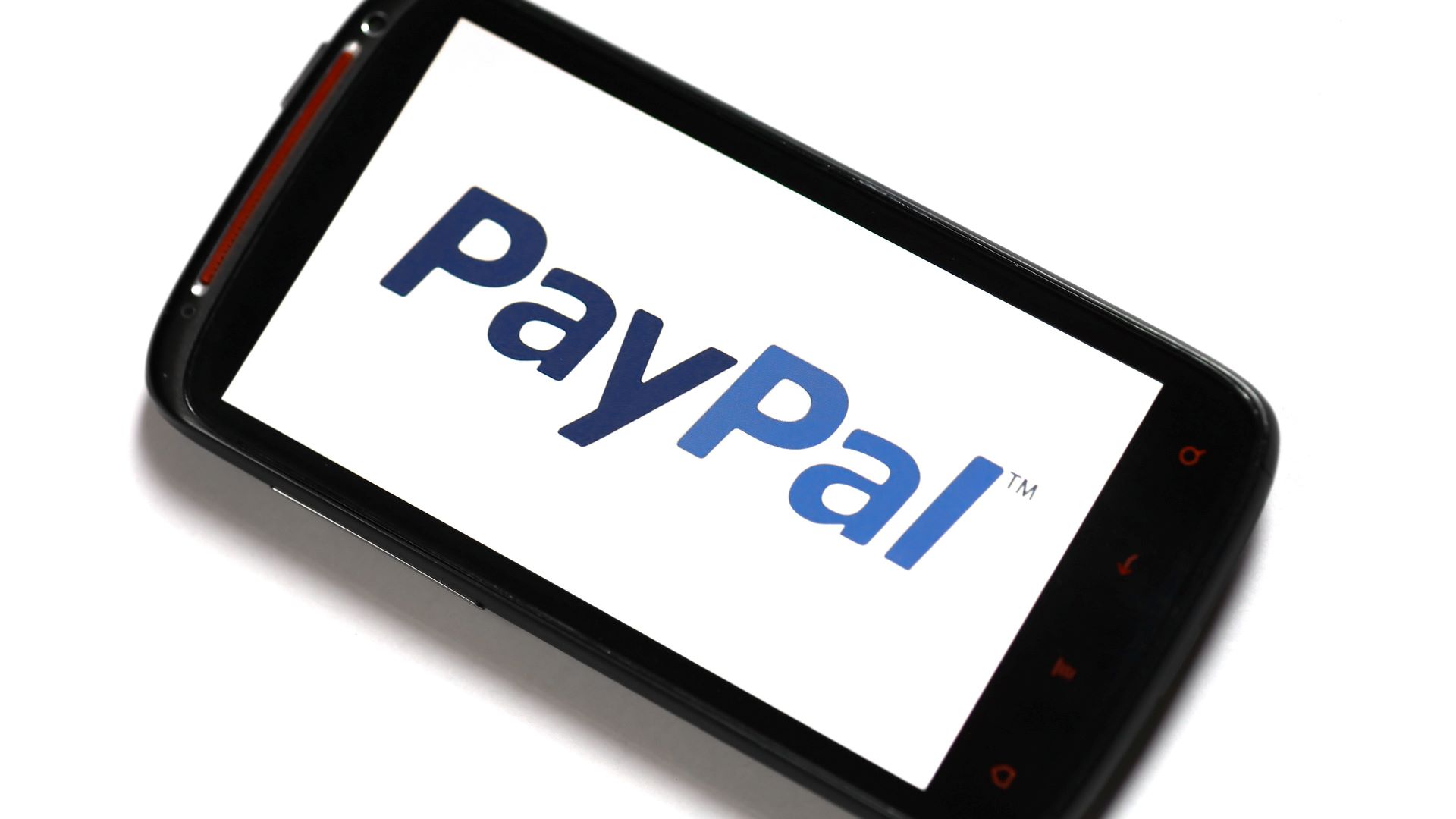

Finance
How To Withdraw From Vanguard 401K
Published: October 17, 2023
Learn how to withdraw from your Vanguard 401K and manage your finances more effectively. Take control of your future today.
(Many of the links in this article redirect to a specific reviewed product. Your purchase of these products through affiliate links helps to generate commission for LiveWell, at no extra cost. Learn more)
Table of Contents
- Introduction
- Step 1: Understand the Withdrawal Rules and Regulations
- Step 2: Review Your 401K Plan
- Step 3: Determine Eligibility for Withdrawal
- Step 4: Consider Alternatives to Withdrawing
- Step 5: Contact Vanguard Customer Service
- Step 6: Complete the Necessary Forms
- Step 7: Track the Progress of Your Withdrawal
- Step 8: Evaluate the Tax Implications
- Step 9: Receive Your Withdrawal
- Conclusion
Introduction
Welcome to our guide on how to withdraw funds from your Vanguard 401K account. Making a withdrawal from your 401K can be a complex process, but with the right knowledge and guidance, it can be done smoothly and efficiently. In this article, we will walk you through the steps you need to take to initiate a withdrawal from your Vanguard 401K.
A 401K is a retirement savings plan offered by employers to their employees. It allows individuals to contribute a portion of their salary to a tax-advantaged investment account, where the funds can grow over time. While the primary purpose of a 401K is to save for retirement, there may be situations where you need to withdraw money before reaching the eligible age.
Before we dive into the steps, it’s important to note that early withdrawals from your 401K may be subject to taxes and penalties. Therefore, it’s crucial to understand the rules and regulations surrounding withdrawals from your Vanguard 401K account, as well as explore any alternatives before deciding to proceed with a withdrawal.
Now, let’s explore the steps you need to follow to withdraw funds from your Vanguard 401K account. Each step is designed to help you navigate the withdrawal process effectively, ensuring that you meet the necessary requirements and minimize any potential drawbacks.
Step 1: Understand the Withdrawal Rules and Regulations
Before proceeding with a withdrawal from your Vanguard 401K account, it’s essential to familiarize yourself with the withdrawal rules and regulations set by both Vanguard and the Internal Revenue Service (IRS). These rules are in place to ensure the proper use of retirement funds and to maintain the tax-advantaged status of your 401K.
Firstly, it’s important to determine the type of withdrawal you wish to make. There are generally two types of withdrawals: a hardship withdrawal and a non-hardship withdrawal. A hardship withdrawal is made due to an immediate and significant financial need, such as medical expenses, tuition payments, or preventing eviction from your home. On the other hand, a non-hardship withdrawal is made for reasons other than financial hardship.
While non-hardship withdrawals are generally permitted, they may be subject to income tax and a 10% early withdrawal penalty if you are under the age of 59 ½. Exceptions to the early withdrawal penalty may apply in certain circumstances, such as for disability, death, or specific medical expenses. It’s crucial to consult the IRS guidelines or speak with a financial advisor to fully understand your eligibility and potential tax implications.
Furthermore, Vanguard may have additional rules and restrictions for withdrawals from your specific 401K plan. These rules can vary depending on your employer’s plan and the investment options within your account. It’s important to thoroughly review the plan documents, including the Summary Plan Description (SPD), to understand any specific requirements or limitations.
Take the time to understand the withdrawal rules and regulations before proceeding to ensure that you make an informed decision based on your financial situation and goals. As you gather this information, you will have a clear understanding of the conditions and potential consequences associated with withdrawing from your Vanguard 401K account.
Step 2: Review Your 401K Plan
Once you have a good understanding of the withdrawal rules and regulations, the next step is to thoroughly review your Vanguard 401K plan documentation. This will provide you with specific details about your account, including your investment options, contribution limits, and any unique features or restrictions.
Start by accessing your online account on the Vanguard website or contacting Vanguard’s customer service for assistance. Look for the Summary Plan Description (SPD) document, which outlines the key provisions of your 401K plan. This document will contain important information about your eligibility for withdrawals, the types of withdrawals allowed, and any special requirements or considerations.
Pay close attention to the section on withdrawals, as this will provide details on the process and any specific forms or documentation you may need to complete. It’s important to understand the timeline for processing withdrawals and any fees or penalties that may apply.
In addition to the SPD, review any investment materials provided by Vanguard. This will give you insight into the performance and fees associated with your investment options. Understanding your investment strategy and the potential impact of a withdrawal on your long-term financial goals is crucial.
If you are unsure about any aspect of your 401K plan, don’t hesitate to reach out to Vanguard’s customer service team. They are available to answer your questions and provide guidance based on your specific situation.
By thoroughly reviewing your 401K plan, you will have a clear understanding of the rules, limitations, and options available to you. This knowledge will help you make informed decisions throughout the withdrawal process and ensure that you are maximizing the benefits of your Vanguard 401K account.
Step 3: Determine Eligibility for Withdrawal
Before proceeding with a withdrawal from your Vanguard 401K account, it’s important to determine your eligibility. Eligibility for withdrawal can depend on several factors, including your age, employment status, and the specific rules outlined in your 401K plan.
Firstly, consider your age. Generally, individuals must be at least 59 ½ years old to make penalty-free withdrawals from a 401K account. If you are younger than this age, you may be subject to a 10% early withdrawal penalty on top of any taxes owed on the withdrawn funds. However, there are certain exceptions to the early withdrawal penalty, such as for disability, death, or specific medical expenses. Review the IRS guidelines or consult a financial advisor to determine if you qualify for any of these exceptions.
Next, assess your employment status. While still employed, you may have limited withdrawal options. Some employers only allow in-service withdrawals for specific reasons, such as financial hardship or reaching a certain age. Review your 401K plan documents to understand any restrictions that may apply while you are still employed.
Furthermore, review the specific rules outlined in your Vanguard 401K plan regarding eligibility for withdrawals. This may include requirements such as a minimum account balance, a certain period of participation in the plan, or specific documentation to support your withdrawal request. Understanding these eligibility criteria will help you determine whether you qualify for a withdrawal.
If you find that you are not currently eligible for withdrawal, consider alternative options such as taking a loan from your 401K account (if permitted by your plan) or exploring other sources of funds to meet your financial needs.
In summary, determining your eligibility for withdrawal is an important step in the process. Consider your age, employment status, and the specific rules outlined in your 401K plan to determine if you qualify. If you are not currently eligible, explore alternative options or consult a financial advisor for guidance on managing your financial situation.
Step 4: Consider Alternatives to Withdrawing
While withdrawing from your Vanguard 401K account may seem like a tempting solution to meet your financial needs, it’s important to consider alternative options before proceeding. Withdrawing funds from your 401K can have long-term consequences, including taxes, penalties, and potential impact on your retirement savings.
Firstly, assess your immediate financial situation and explore other sources of funds. Look into your emergency savings, personal savings accounts, or other investments that might be available to you. This can help you determine if there are alternative sources of money that can meet your current needs without touching your 401K account.
If needed, consider taking out a loan from your 401K account. Not all 401K plans allow for loans, so review your plan documents to determine if this is an option for you. Keep in mind that borrowing from your 401K should be done with caution as it can impact your long-term savings and repayment terms may be required.
Additionally, explore other loan options available to you, such as personal loans or home equity loans. These options may offer more flexible terms and potentially lower interest rates compared to withdrawing from your 401K.
If you are facing financial hardship, consider speaking with a financial advisor or a credit counseling agency. They can provide guidance on budgeting, debt management, and other strategies to help you navigate through your financial challenges without dipping into your retirement savings.
Taking the time to explore alternative options can help you avoid unnecessary taxes, penalties, and potential setbacks to your long-term retirement goals. While it may be tempting to withdraw from your 401K, it’s crucial to consider the bigger picture and evaluate the potential impact on your financial future.
By carefully weighing the alternatives and seeking professional advice when necessary, you can make a well-informed decision that aligns with both your short-term needs and long-term financial well-being.
Step 5: Contact Vanguard Customer Service
Once you have familiarized yourself with the withdrawal rules and regulations, reviewed your 401K plan, assessed your eligibility, and considered alternative options, it’s time to reach out to Vanguard’s customer service. Contacting them will provide you with the necessary guidance and assistance to navigate the withdrawal process smoothly.
Start by visiting Vanguard’s website and locating the customer service contact information. This may include a phone number, email address, or a secure messaging platform within your online account. Choose the method of communication that is most convenient for you.
When contacting Vanguard, be prepared with specific questions about your withdrawal options and any documentation or forms required. The customer service representative will be able to provide you with clear instructions on how to proceed and can address any concerns or uncertainties you may have.
Remember to provide accurate and up-to-date information when speaking with the customer service representative. This will ensure that you receive the most accurate guidance tailored to your specific situation.
Vanguard’s customer service team is known for their professionalism and expertise in dealing with retirement accounts. They have extensive knowledge of Vanguard’s 401K plans and can guide you through the withdrawal process from start to finish.
If you encounter any issues or roadblocks along the way, don’t hesitate to seek their assistance. They are there to help you and ensure that you have a positive experience with your Vanguard 401K account.
By contacting Vanguard’s customer service, you can have peace of mind knowing that you have access to expert guidance and support throughout the withdrawal process.
Step 6: Complete the Necessary Forms
After contacting Vanguard customer service and receiving guidance on the withdrawal process, you will need to complete the necessary forms to initiate your withdrawal from your Vanguard 401K account.
First, ask the customer service representative for a list of required forms and documents. These forms can typically be downloaded from Vanguard’s website or obtained by mail. It’s important to ensure that you have the most up-to-date versions of the forms to avoid delays in processing your withdrawal.
The specific forms you need to complete may vary depending on the type of withdrawal you are making. For example, if you are making a hardship withdrawal, you may need to provide documentation supporting your financial need, such as medical bills, eviction notice, or tuition expenses.
When completing the forms, pay close attention to the instructions provided. Ensure that you provide accurate and complete information, as any errors or omissions can result in delays or potential issues with your withdrawal.
If you require assistance or have questions while completing the forms, reach out to Vanguard’s customer service for guidance. They can provide clarification and help you navigate through any complex sections.
Take your time to review the completed forms before submitting them. Double-check that all required fields are filled out, and ensure that you have attached any necessary supporting documentation.
Once you have completed the forms, follow the instructions provided by Vanguard to submit them. This typically involves mailing the forms to the designated address or uploading them securely through Vanguard’s online portal.
Keep a copy of the completed forms and any supporting documentation for your records. This will be useful for reference and documentation purposes.
By diligently completing the necessary forms, you will ensure that your withdrawal request is processed accurately and efficiently.
Step 7: Track the Progress of Your Withdrawal
Once you have submitted the necessary forms to initiate your withdrawal from your Vanguard 401K account, it’s important to stay informed about the progress of your request. Tracking the status of your withdrawal will help you stay updated on the timeline and ensure that everything is proceeding smoothly.
Start by noting down any confirmation numbers or reference numbers provided by Vanguard when you submitted your withdrawal forms. These numbers can be used to reference your specific withdrawal request when contacting Vanguard for updates.
Next, utilize Vanguard’s online account management tools to check the status of your withdrawal. Log in to your account and navigate to the section dedicated to your 401K account. Look for a “Withdrawal Status” or similar feature that allows you to track the progress of your request.
If you encounter any difficulties or have questions regarding the status of your withdrawal, don’t hesitate to reach out to Vanguard’s customer service. They can provide you with real-time updates on the progress of your withdrawal and address any concerns or inquiries you may have.
During the tracking process, be patient, as it may take some time for Vanguard to process your withdrawal request. Factors such as the type of withdrawal, the completeness of your forms, and the volume of requests being processed can influence the timeline. However, staying informed and taking proactive steps to track your withdrawal will give you peace of mind and confidence in the process.
It’s also important to remember that while tracking the progress of your withdrawal, continue to monitor your overall financial plan. Ensure that you have considered the potential impact of the withdrawal on your long-term financial goals and make any necessary adjustments to your savings and investment strategies if needed.
By actively tracking the progress of your withdrawal, you can stay informed throughout the process and address any issues or concerns promptly. This will help ensure a smooth and successful withdrawal from your Vanguard 401K account.
Step 8: Evaluate the Tax Implications
As you progress through the withdrawal process from your Vanguard 401K account, it’s crucial to evaluate the tax implications associated with your withdrawal. Understanding the tax consequences will help you prepare for any potential financial obligations and make informed decisions about the timing and amount of your withdrawal.
Firstly, determine the type of withdrawal you are making. If you are under the age of 59 ½ and making a non-hardship withdrawal, you may be subject to a 10% early withdrawal penalty imposed by the IRS, in addition to regular income taxes on the withdrawn amount. This could significantly impact the total funds you receive from your withdrawal.
On the other hand, if you are making a hardship withdrawal, it’s important to assess the tax implications specific to your situation. Depending on the purpose of the hardship withdrawal, there may be different rules and regulations for the tax treatment of the funds. Consult the IRS guidelines or speak with a tax professional to ensure you are prepared for any tax obligations.
Next, review your current income situation. Consider how the withdrawal amount will impact your tax bracket and any other taxable income you may have. Understanding the potential tax implications will help you plan for any additional tax liabilities or potential refund eligibility.
It is recommended to consult with a tax advisor or accountant to fully understand the specific tax implications related to your withdrawal. They can provide personalized advice based on your individual circumstances and help you estimate the potential tax liability.
Additionally, it’s important to evaluate the potential impact on your retirement savings. Withdrawing funds from your 401K account reduces the amount of money available for future growth. Consider the long-term consequences of your withdrawal and whether there are alternative sources of funds that might be more suitable for your financial needs.
By carefully evaluating the tax implications, you will be better prepared to manage the financial impact of your withdrawal and make informed decisions about the timing and amount of your Vanguard 401K withdrawal.
Step 9: Receive Your Withdrawal
After following all the necessary steps, including understanding the withdrawal rules, reviewing your 401K plan, determining eligibility, considering alternatives, contacting Vanguard customer service, completing the required forms, tracking the progress, and evaluating the tax implications, it’s time to receive your Vanguard 401K withdrawal.
Once Vanguard has processed your withdrawal request and all necessary documentation has been verified, you will receive the funds in the method you have chosen. Vanguard typically offers several options for receiving your withdrawal, such as direct deposit, a check sent by mail, or a wire transfer.
If you have chosen direct deposit, ensure that you have provided accurate banking information to Vanguard. This will allow for a smooth and timely transfer of funds into your designated bank account.
If you have chosen to receive a check by mail, allow sufficient time for the delivery and processing of the check. Depending on your location, this may take several business days. Keep in mind that maintaining the security of the check is essential, as it represents a significant amount of money.
If you have opted for a wire transfer, double-check the banking details you provided to Vanguard. Accurate and complete information will help facilitate a seamless transfer of your funds.
Upon receiving your withdrawal, it’s important to carefully review the amount to ensure it matches your expectations. If you have any questions or concerns about the amount received or encounter any discrepancies, contact Vanguard’s customer service for assistance.
Once you have received your withdrawal, you are free to use the funds as needed. Keep in mind, however, that if you made a non-hardship withdrawal before reaching the age of 59 ½, you may still be subject to income taxes and potential penalties.
Finally, take the time to reassess your overall financial plan and consider how the withdrawal may impact your retirement goals and future financial well-being. Speak with a financial advisor if necessary to ensure that you are on track for a secure and comfortable retirement.
By completing all the necessary steps and receiving your Vanguard 401K withdrawal, you have successfully accessed the funds you needed while managing the potential tax implications and future impact on your retirement savings.
Conclusion
Withdrawing funds from your Vanguard 401K account is a significant decision that requires careful consideration and understanding of the rules and regulations. By following the steps outlined in this guide, you can navigate the withdrawal process smoothly and make informed decisions that align with your financial goals and needs.
Throughout the process, it is important to remember the potential tax implications associated with your withdrawal, as well as exploring alternative options and assessing the long-term impact on your retirement savings. Consulting with professionals, such as financial advisors or tax advisors, can provide valuable insights and guidance tailored to your specific situation.
Vanguard’s customer service is an invaluable resource throughout the withdrawal process. Do not hesitate to reach out to them for assistance, whether it is to clarify any doubts, track the progress of your withdrawal, or address any concerns you may have.
Ultimately, the withdrawal from your Vanguard 401K account should align with your financial needs, goals, and personal circumstances. By utilizing the information and steps outlined in this guide, you can make informed decisions and maximize the benefits of your retirement savings.
Remember that your retirement savings are designed to support you during your golden years. It is important to strike a balance between accessing the funds you need today and ensuring a secure and comfortable retirement in the future. By taking a thoughtful and strategic approach to your Vanguard 401K withdrawal, you can achieve this balance and set yourself up for financial success.














